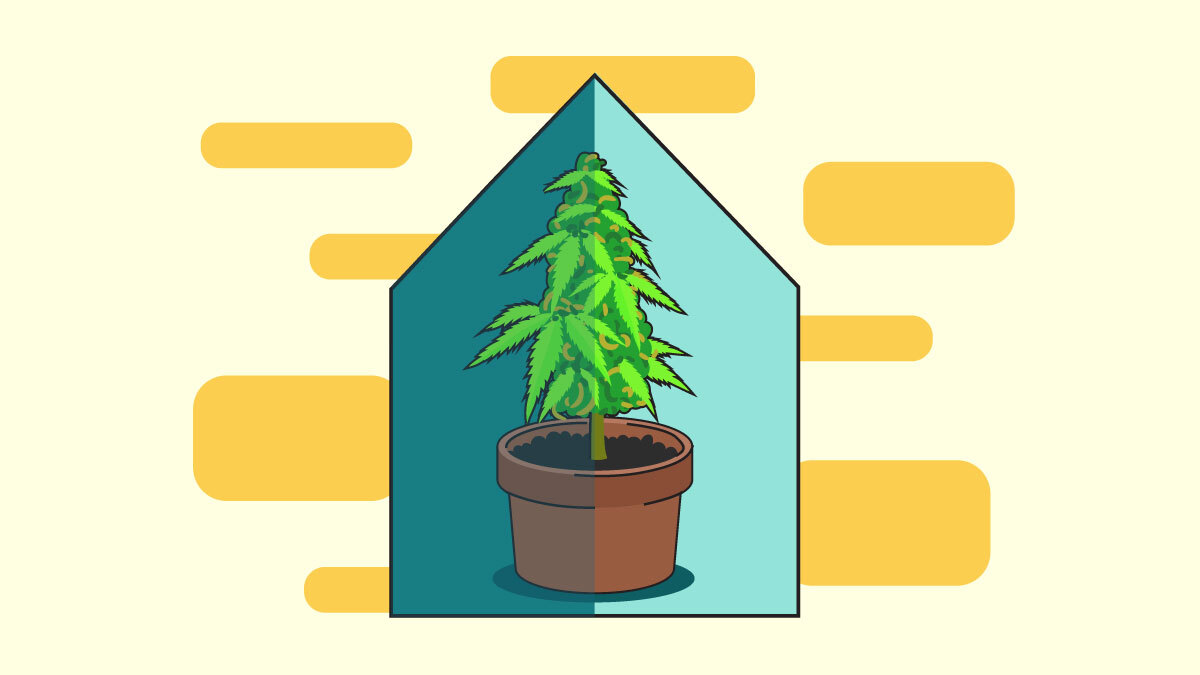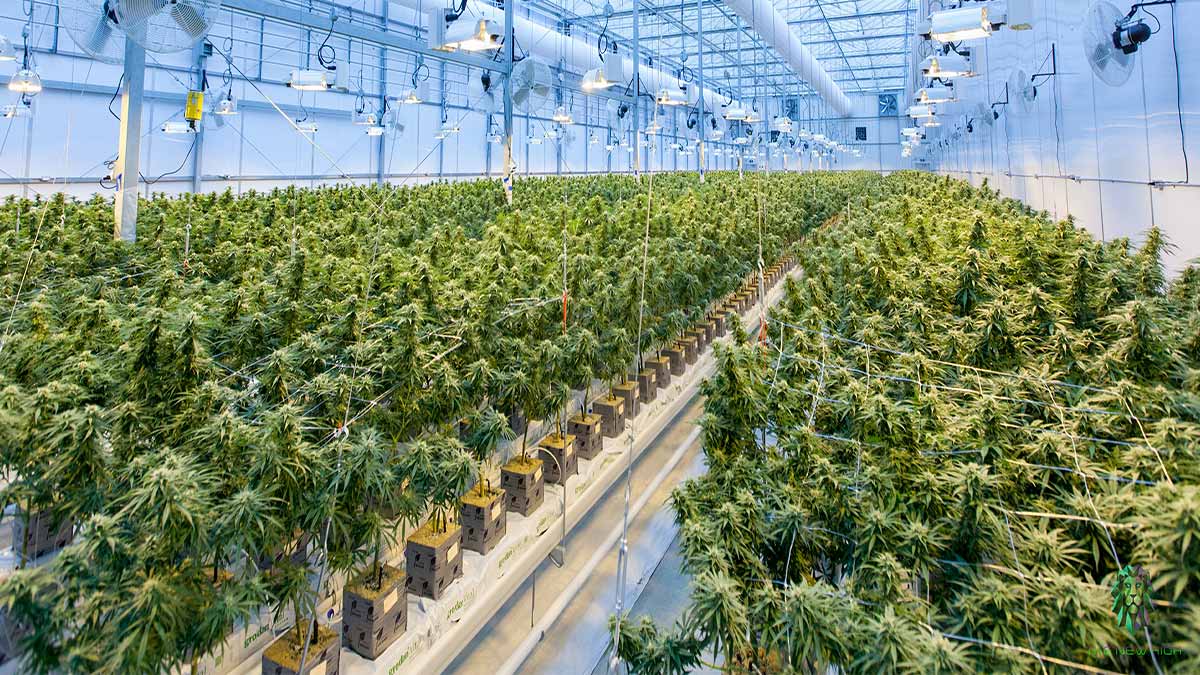What is Light Deprivation & How Does It Affect Cannabis?

You consider yourself a cannabis connoisseur. You know almost all of the best strains, all of the ways to consume them, and even how to (allegedly) beat a drug test. You certainly know all of the terminologies, whether it’s the language of stoners, dealers, or dispensaries.
Then you come across something you’ve never heard of before: light dep weed.
You’ll be most likely to hear about (or be offered) light dep weed in California or elsewhere on the West Coast. It probably looks different than the bud you usually buy. It might cost around the same price you usually pay, or possibly more. But very often it’ll be cheaper – rarely a good sign.
But what in the world is light dep weed? Is it terrific? Is it synthetic? Is it crap?
It’s actually plain old marijuana, grown with an unusual technique. Light dep is short for “light deprivation,” and it’s a method that some producers use to produce much larger crops in much shorter periods of time.
What’s the weed-like? Should you try using the method at home for your own plants?
The answers are sort of complicated. Let’s unpack them.
The Light Dep Weed Technique
It typically takes growers six to eight months to grow and harvest a full cannabis crop.
But a shortcut was discovered during the 1980s, in the famed marijuana haven of Humboldt, California. A few growers started using it then, but over the next 20 years, it became popular in the weed-growing areas of the West Coast.
In a nutshell, the idea is to fool plants into thinking that it’s time to flower, even though it’s actually still early in the normal growing season. Growers use huge tarps to block light from reaching the plants for 12 hours a day; the reduced amount of light – light deprivation – tricks the plants into flowering early and producing harvestable buds in just a few months.
The biggest advantage of light dep weed for cannabis growers is obvious. If they can produce a crop in half the usual time, or even faster than that, they can plant one or possibly two more crops than usual during a season. Two or three harvests a year will put a lot more money into their pockets.
Not as much as you might think, though, since light dep growing is expensive and labor-intensive. The tarps have to be seamless and lightproof and have to be taken on and off the greenhouses at the same time every day. Some cultivators have installed machinery to do that work, but it’s not cheap. Climate extremes can damage the tarps and ruin the harvest, maintaining the proper temperature and humidity is even more crucial for light deprivation growing, and expensive clones seem to respond best to light dep.
More and more Pacific Coast growers find the technique worth the difficulty, however. Light dep weed is now being seen quite often by consumers in that area. And they understandably wonder if the buds are worth buying.
What Is Light Dep Weed Like?

There’s no definitive answer to that question. Some strains respond to light dep much better than others; OG Twist, Urkle Wreck, and Green Crack are among the strains that some producers favor. However, many others use the technique for their entire grow, which means the quality of light dep weed on the market varies considerably.
When plants respond well, their buds take on many of the characteristics of cannabis that’s been grown indoors: purple, frosty, large, and powerful. Otherwise, the buds are often smaller and less potent, and they may turn much darker than usual. That’s why there’s no way to predict whether you’ll be happy or upset with a light dep purchase. Some bulk purchasers in the industry say they can tell cannabis that’s grown with light deprivation just by glancing at it, but most consumers aren’t likely to be able to tell the difference as easily.
It’s impossible to predict the price of light dep weed, too. It often sells for a lower price, because large-scale growers are able to produce much more of it in a season. On the other hand, smaller growers may try to charge a premium, because it’s so expensive for them to produce.
The cost may vary by season as well; early in the growing year, light dep may be the only “fresh” herb available on the market. Almost everything else for sale will have been harvested the previous fall. Late in the growing year, prices for light dep weed can fall, because it’s competing with all of the other cannabis hitting the shelves.
With all of that having been said, should you look for or purchase a light dep product? It’s certainly worth trying, particularly in the spring or early summer when it’s likely to be the freshest weed you can find – unless your supplier grows exclusively indoors. Just remember that some of this light-deprived pot may be primo, while some may not be worth what you spend on it.
Can You Use the Light Dep Technique For Home Grows?
Absolutely, if you grow your weed outdoors in a greenhouse or hoop house.
- Start your plants indoors under fluorescent lights, and move them outside as soon as the last frost is over.
- Have a blackout tarp or tent ready to go; many find that it’s easiest to put the blackout material onto a frame that’s been built on wheels. Wheeling the frame into position over the plants, and wheeling it away at night, is much less work than having to properly position a tarp over your greenhouse or hoop house every day and then remove it twelve hours later.
- Set a firm schedule for the light deprivation, and stick to it. It’s best to let the plants get as much sunlight as possible, and cover them early in the evening so they’re certain to get twelve uninterrupted hours of complete darkness.
- As soon as the plants begin flowering, start a new group of plants indoors.
- Sometime in early-to-mid summer, the first batch should be ready to harvest.
- As soon as you’ve collected all of your buds, bring the second batch outdoors and repeat the light dep technique. You’ll have another harvest in the fall!
Remember that some strains respond to light deprivation better than others, so don’t be too disappointed if your first try with light dep weed doesn’t turn out the way you’d hoped. Just try again with a different strain – and eventually, you’ll have more pot than you know what to do with.
Light Dep Weed FAQ
Q: Is there a good way to get three harvests a year instead of two?
A: Try using strains that normally grow quickly, like OG Kush, Lowryder, or Big Bud. Since they normally flower more quickly, you’ll stand the best chance of squeezing out an extra harvest each year.
Q: Can you use the light dep technique with auto-flowering strains?
A: There’s no point in doing it. These strains don’t rely on light cycles for flowering, so shutting out light for twelve hours a day won’t make any difference in what they produce or how quickly they produce it. If you’re growing auto-flowering plants outdoors, look for so-called “super” autos like Maxi Haze Auto or Auto Supernatural OG, which grow quite tall and produce lots of flowers. If you have lots of room, stagger your batches to put two or three different batches out during the spring and early summer. Since the amount of light they get isn’t important, you’ll wind up with two or three harvests running right through the fall.
Q: Is there any reason, other than profit, for growers to cultivate light dep weed?
A: It’s also better for the environment. Growing light dep plants results in less electricity consumption and a much lower carbon footprint – and not incidentally, it also lowers growers’ often-steep electric bills.